V
Vhyle
New member
Now we'll be touching up on programming interesting beats with your virtual drumkit. This lesson, I'm basically exploring the vast world of changing note duration with your beat. You'll see what I mean in a minute.
Here's the beat format that I'll be using for this part of the lesson. Again, we'll stick to 4/4 time at 120 bpm, to keep it simple:
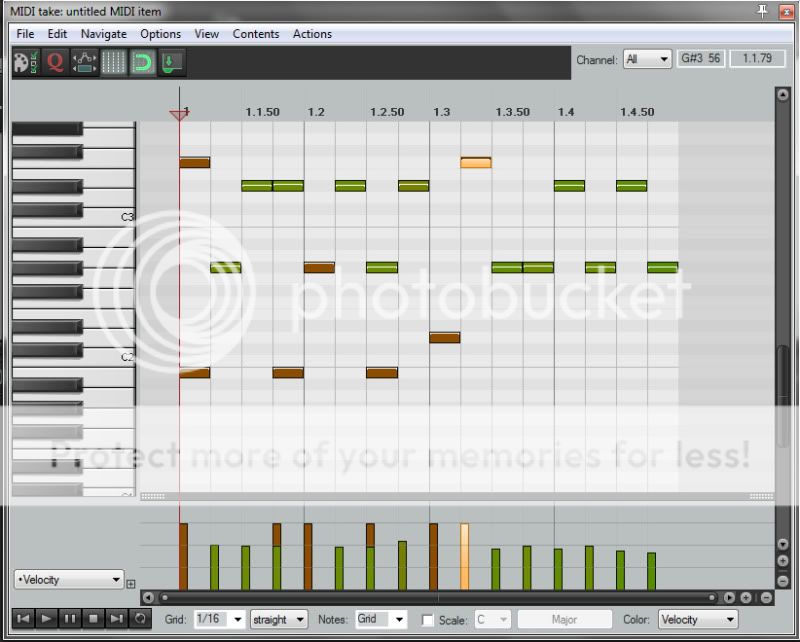
Now, here's the emphasis of this lesson. I mentioned a little bit ago about changing note duration - here's what I mean:

See that? Down there, you can choose 1/4, 1/8, 1/16, 1/32 notes, and so on. That's typical for music theory, as we all know by now. But here's a little secret - you can click down there, and type in any fraction you want. In this example, I typed in 1/20 notes. Didn't know they existed? Well they do now! Listen to the sample a few times and hear the pattern between the hi-hat and ride.
With this knowledge and some creativity, you can now make up just about any note division you want for your rhythm or fill patterns.
Here's another sample:
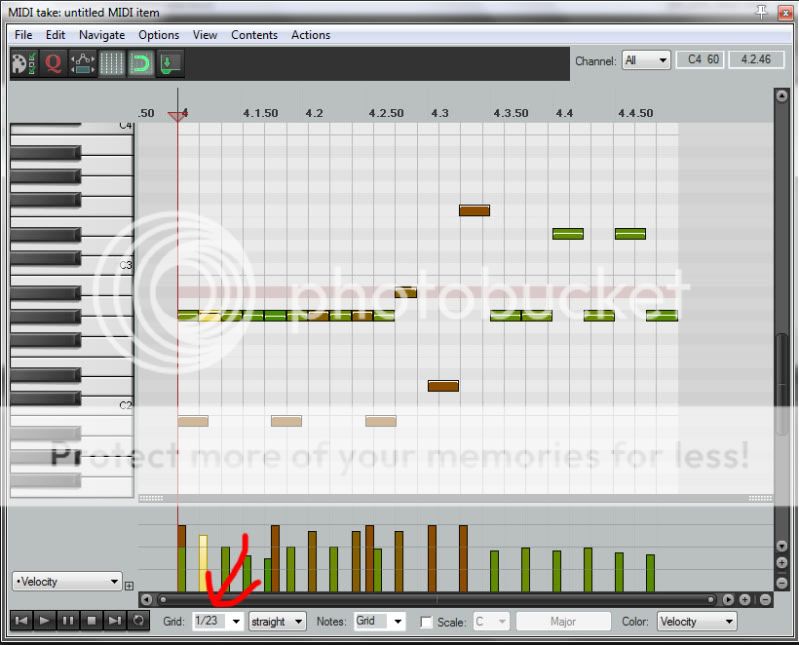
1/23 notes. What in the hell is that?? In music theory standards, this is unheard of and definitely outside the box. That's where your creativity and taste comes in - knowing you can subdivide notes any which way you want, you have just unlocked a whole new world of rhythmic possibilities.
Alright, let's change it up a bit. I've programmed a very basic blues beat. 6/8 time signature, at 75 bpm. Notice the "triplet" setting next to the 1/8 note duration - in Reaper's MIDI editor, this is standard for 3-, 6-, or 12-note formats (again, I can't speak for other DAWs). Here's the format:
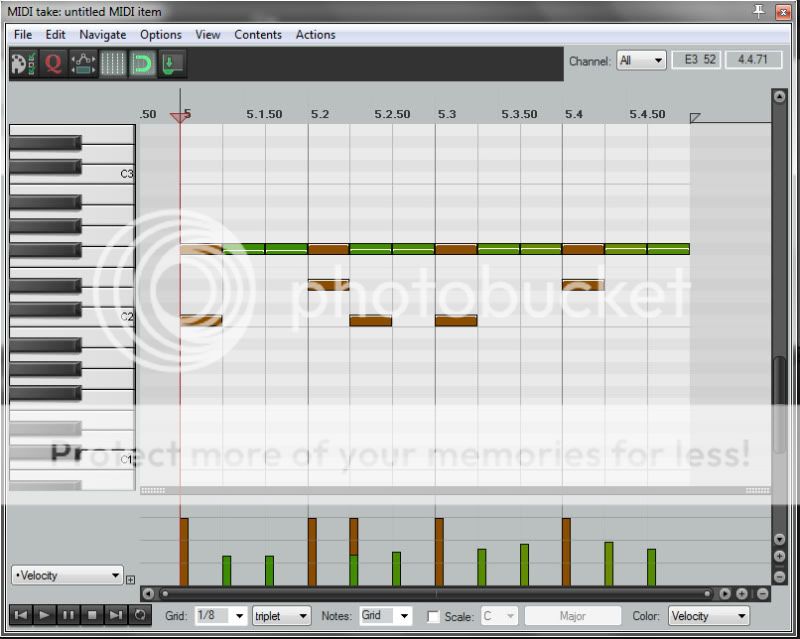
Now to display a typical note subdivision. Essentially, the same beat but playing 16th notes on the hi-hat. Nothing fancy or odd here.
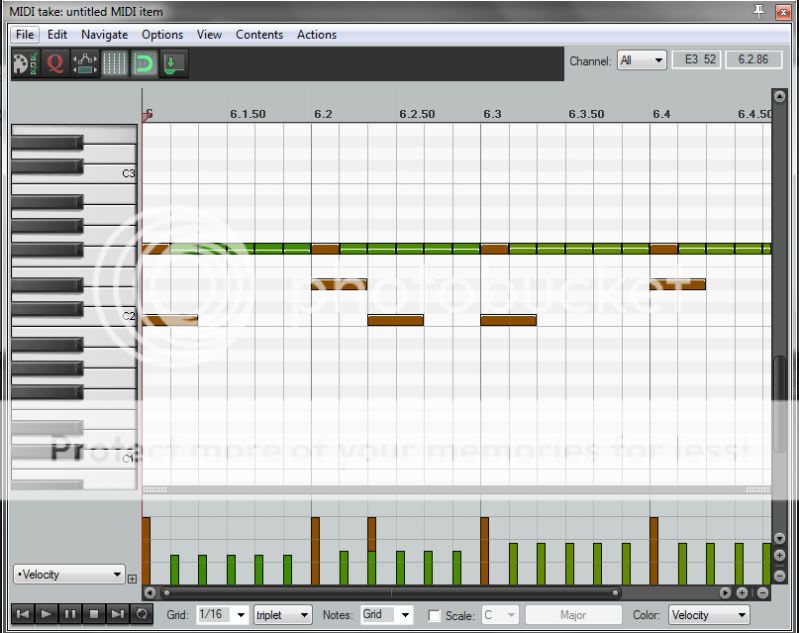
Now, I just did some absolutely impractical playing here, JUST to display the odd note duration possibilities. With each beat of the measure, I changed the note duration. You can see for yourself in the following images, and hear it in the example at the end of the images. Pay attention to the lower left at the note duration fractions:

1/24 notes aren't that odd, actually. They fit as triplets inside of an already triplet-based beat. A good example of this would be the ending to "Aenima" by Tool - listen to what Danny Carey is doing on the drums. Those are 1/24th notes, essentially.
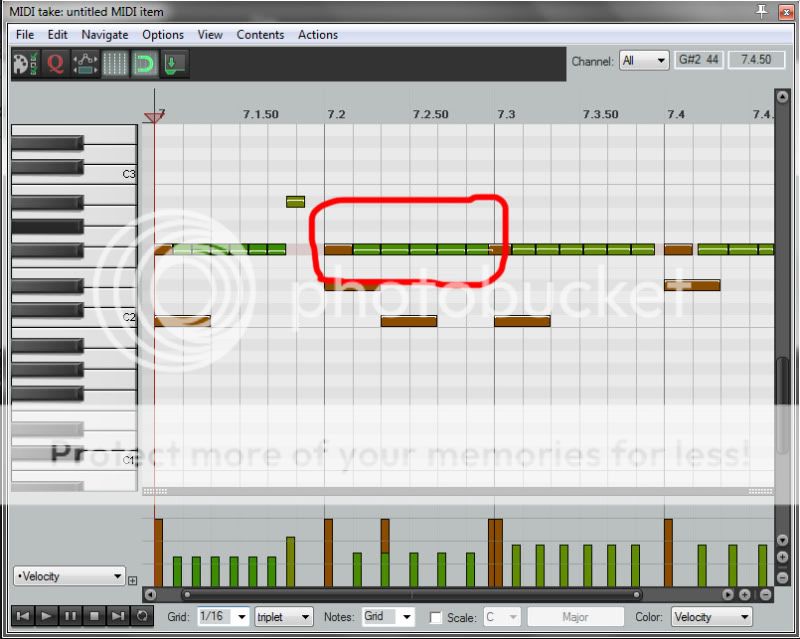
1/16-note triplets. Not that odd.
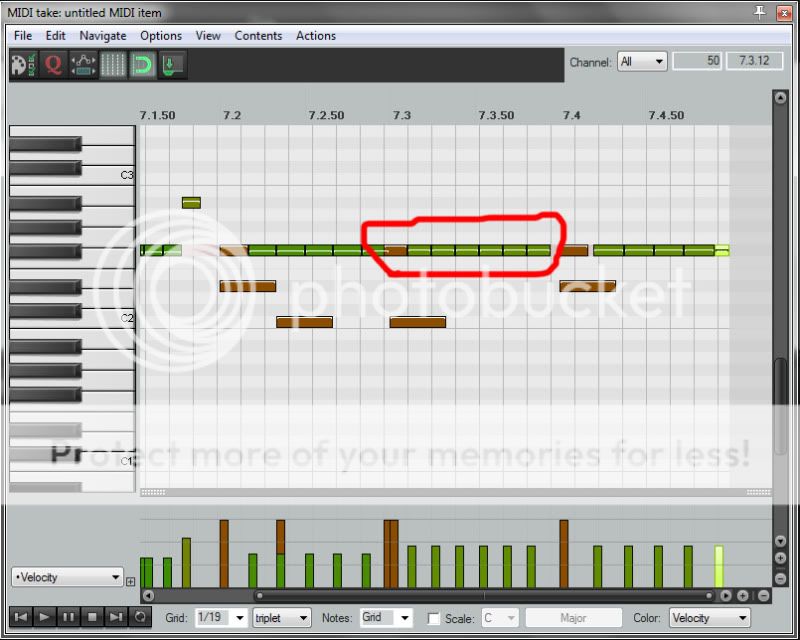
1/19 notes? LOLWUT?!
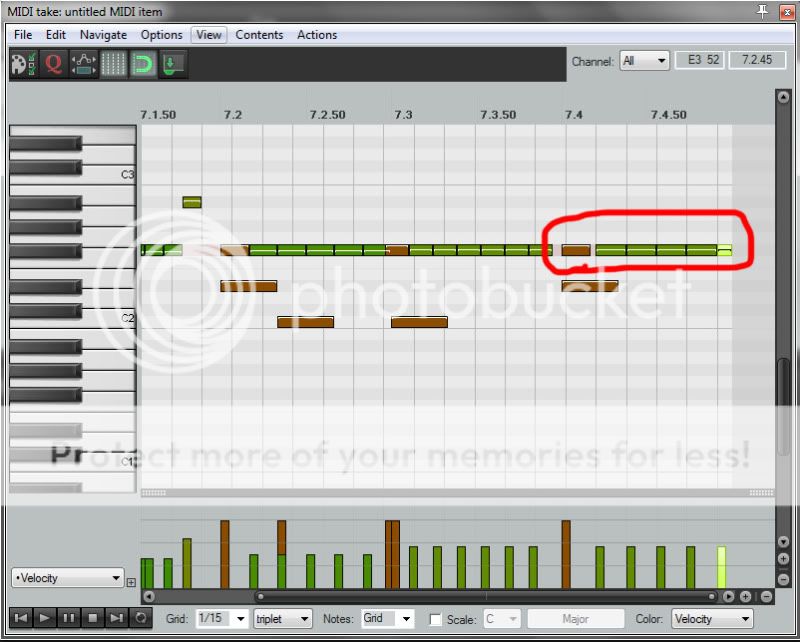
1/15 notes. Just as weird!
And the audio example of this whole measure. Listen to the hi-hat work carefully:
Ok, now here's another very important point about this lesson. And this applies directly to REALISTIC drum programming. If you want to take realism to the next level, you can use the manual note subdivision you learned in this lesson to your full advantage, and here's why:
If you're programming metal drumming (something with a LOT of double-kick), most modern players usually can't maintain perfect 16th notes measure after measure. It just doesn't always happen. It's human nature. So, if you really want to take realism to a whole new level, you can use the tips in this lesson to program a line of 17th-note or 15th-notes on the double kicks, so they don't perfectly sync up with the hands. This slight imperfection will add a whole new degree of realism to your drum programming.
Examples:
4/4 rhythm with 16th notes on the kick drums. Obviously, this is very common in extreme metal. But too many of these perfect 16th notes, and a lot of people start questioning its realism. It's too perfect; too robotic.
Same 4/4 rhythm, but with 15th notes on the kick drums instead of the 16ths like before. It's a very slight, very subtle difference. Just as convincing for a lot of extreme metal, but there is a slight sloppiness that indefinitely adds a degree of realism to the drumming.
If you utilize this technique during some points in your drum programming (if your music calls for it, anyway), then it will sound even less robotic and mechanical.
Of course, there ARE drummers out there that can perform perfect kick-drum playing (i.e. George Kollias), but I digress. Not every musician has access to a perfect extreme drummer.
Alright, this lesson was fairly quick, but there's a lot to soak in. I hope this wasn't too much to take in at once! But if so, don't worry, because I will cover more on odd-note durations in drum fills in the following lessons.
So to wrap it up: you can manually input any fraction you can think of as a note duration, and program away. Not only that, you can combine any fraction with straight, triplet, dotted or swing notes. Between these two factors, you literally have unlimited options for rhythmic patterns on your programmed drums.
Next lesson - drum fills! The funnest part of drumming, AMIRITE?
-----------------------
Feedback is welcome, as always. Let me know what I can do to help you get more out of these lessons. Thanks for reading!
- Vhyle
Here's the beat format that I'll be using for this part of the lesson. Again, we'll stick to 4/4 time at 120 bpm, to keep it simple:

Now, here's the emphasis of this lesson. I mentioned a little bit ago about changing note duration - here's what I mean:

See that? Down there, you can choose 1/4, 1/8, 1/16, 1/32 notes, and so on. That's typical for music theory, as we all know by now. But here's a little secret - you can click down there, and type in any fraction you want. In this example, I typed in 1/20 notes. Didn't know they existed? Well they do now! Listen to the sample a few times and hear the pattern between the hi-hat and ride.
With this knowledge and some creativity, you can now make up just about any note division you want for your rhythm or fill patterns.
Here's another sample:

1/23 notes. What in the hell is that?? In music theory standards, this is unheard of and definitely outside the box. That's where your creativity and taste comes in - knowing you can subdivide notes any which way you want, you have just unlocked a whole new world of rhythmic possibilities.
Alright, let's change it up a bit. I've programmed a very basic blues beat. 6/8 time signature, at 75 bpm. Notice the "triplet" setting next to the 1/8 note duration - in Reaper's MIDI editor, this is standard for 3-, 6-, or 12-note formats (again, I can't speak for other DAWs). Here's the format:

Now to display a typical note subdivision. Essentially, the same beat but playing 16th notes on the hi-hat. Nothing fancy or odd here.

Now, I just did some absolutely impractical playing here, JUST to display the odd note duration possibilities. With each beat of the measure, I changed the note duration. You can see for yourself in the following images, and hear it in the example at the end of the images. Pay attention to the lower left at the note duration fractions:

1/24 notes aren't that odd, actually. They fit as triplets inside of an already triplet-based beat. A good example of this would be the ending to "Aenima" by Tool - listen to what Danny Carey is doing on the drums. Those are 1/24th notes, essentially.

1/16-note triplets. Not that odd.

1/19 notes? LOLWUT?!

1/15 notes. Just as weird!
And the audio example of this whole measure. Listen to the hi-hat work carefully:
Ok, now here's another very important point about this lesson. And this applies directly to REALISTIC drum programming. If you want to take realism to the next level, you can use the manual note subdivision you learned in this lesson to your full advantage, and here's why:
If you're programming metal drumming (something with a LOT of double-kick), most modern players usually can't maintain perfect 16th notes measure after measure. It just doesn't always happen. It's human nature. So, if you really want to take realism to a whole new level, you can use the tips in this lesson to program a line of 17th-note or 15th-notes on the double kicks, so they don't perfectly sync up with the hands. This slight imperfection will add a whole new degree of realism to your drum programming.
Examples:
4/4 rhythm with 16th notes on the kick drums. Obviously, this is very common in extreme metal. But too many of these perfect 16th notes, and a lot of people start questioning its realism. It's too perfect; too robotic.
Same 4/4 rhythm, but with 15th notes on the kick drums instead of the 16ths like before. It's a very slight, very subtle difference. Just as convincing for a lot of extreme metal, but there is a slight sloppiness that indefinitely adds a degree of realism to the drumming.
If you utilize this technique during some points in your drum programming (if your music calls for it, anyway), then it will sound even less robotic and mechanical.
Of course, there ARE drummers out there that can perform perfect kick-drum playing (i.e. George Kollias), but I digress. Not every musician has access to a perfect extreme drummer.
Alright, this lesson was fairly quick, but there's a lot to soak in. I hope this wasn't too much to take in at once! But if so, don't worry, because I will cover more on odd-note durations in drum fills in the following lessons.
So to wrap it up: you can manually input any fraction you can think of as a note duration, and program away. Not only that, you can combine any fraction with straight, triplet, dotted or swing notes. Between these two factors, you literally have unlimited options for rhythmic patterns on your programmed drums.
Next lesson - drum fills! The funnest part of drumming, AMIRITE?
-----------------------
Feedback is welcome, as always. Let me know what I can do to help you get more out of these lessons. Thanks for reading!
- Vhyle
Last edited:






 Definitely the weakest link in my stuff,
Definitely the weakest link in my stuff,